” I usually make it in a big pot more than enough for entire family and save some for the next meal “
How to make a comfort Pork-rib spicy and sour soup in every season
Three years ago, I found this amazing spicy-sour soup and started discovering the recipe instead of Tom Yum—a famous Thai sour soup—and I preferred to cook and eat this in every season since then.
“Tom” means soup in Thai, and it refers to watery running soup—unlike western soups which are thick and rich—with stock broth directly and only adds meats, veggies, herbs, spices, and flavors, so you can eat Tom with a meal to comfort your digest.
“Zap” is a Laotian word standing for delicious
In freezing weather, I like to have a hot and sour soup and experience a warm indoor activity. When I make a soup, I usually make it in a big pot more than enough for the entire family and save some for the next meal and I can always heat up anytime.
Is it cool?
Easier to make, easier to reheat and easier to eat.
Step 1: Preparation
The 3-knight herbs
If you’re familiar with Thai cooking, you’ve probably heard these 3 herbs which put in most popular Thai dishes such as Tom Yum, Tom Kha, Larb, and so on. With Tom Zap Soup recipe, we also use them intensely to flavor and enhance by roasting them too.
Galangal root – wash it and slice it (not too thin)
Lemongrass stalks – remove the outer layer and wash. Cut about an inch length.
Kaffir Lime Leaves – wash the leaves and tear them through the stem. They give you better aroma when tearing.
Spiciness
I prefer medium to high spicy level here so I use fresh cayenne pepper and cut it lengthwise. Seeds remain. If you need less spiciness, you can find a substitution such as a Jalapeño or a bell pepper.
Choice of proteins
You can definitely choose any meats you want or mixed vegetables. My recommendation is chicken breast, chicken wings, beef ribs, tofu, napa cabbage, carrot, broccoli, celery.
So, why do I like pork ribs?
It’s amazing when the meat is so tender and falls off the bone. Unlike any other meats, pork meat holds all the flavors so well so I can experience every wonderful bite!
Step 2: Simmering
Boil tap water 20 cups, and then add cut pork ribs 2 lbs while the water is bubbling.
Chef talk: steam meat with boiling water will make the meat still fresh when cooked without losing any flavors. This method will definitely work with fish and seafood.
Let it simmer for about 1 hour with lid closed (leave some hold to prevent over bubbling)
Meanwhile, check on it and get unsatisfied fat and impurities out from the surface.
Step 3: Add all roasted herbs
While you are waiting or watching Thai series(What’s yours?), heat up a flat pan and toss all the herbs until they give a nice smoky citrus aroma.
Next, drop them in the pot when it’s simmering. To extract the flavor intensely, give it about 45 mins or so.
Step 4: Green or Red?
- Coriander leaves: It gives an original Tom Zap flavor. You can find it at the most local Asian market but if you can’t find one you can add any green such as spinach, basil, celery, salad mix
- Fresh cayenne pepper: or bird’s eye chili or dry chili or Jalapeño or bell pepper, anything. What I try to convince you is you should add any pepper in it even though you don’t feel like it because you will waste all your time roasting the aromatic herbs.
Step 5: Time for the seasoning master!
How do you know when it’s ready to be seasoned?
Can I add seasoning any time?
The recipe is not accurate, it’s too…How can I fix it?
…..
The answer is to trust your recipe halfway in Thai cooking.
The soup has given out umami or savoriness taste already from the pork bones and all herbs which means it has own stock broth, so it’s ready to be seasoned with saltiness, sweetness, and sourness respectively. Also, check the pork ribs if it easily falls off the bone yet? Mann, can’t wait!
Start with add saltiness first which is fish sauce.
Fish sauce has some savory taste in it so it will give you extra delicious 😉
Add half of the recipe first and taste if the fish sauce you have is too salty. If not, keep adding and tasting until you feel it “yeah.. salty enough”
Then, add a small amount of sugar to Tom Zap soup. Originally, it doesn’t add at all but I need some sweetness in life, so…
Last, turn off the heat, stir well, add half of the fresh lime juice according to the recipe below.
Taste it now, sometimes your lime gives more sourness than mine.
Final ingredient: Kao Kua which is roasted rice powder will be added to make a thicker broth and more aromatic flavor. It is optional but if you want to know more I have a separate post here>>
Yeah!! It’s now ready to eat!
Ingredients
- 5 Pork Short Ribs
1 lbs of 3-knight herbs = galanga, kiffir Lime leaves, and lemongrass , cut and sliced
- 2 pieces Shallot diced
- 1 oz Coriander leaves chopped
- 1 oz Cilantro chopped
- 0.5 cup Roasted Rice Powder *see post
- 10 pieces Fresh Chili cut lengthwise
- 0.5 cup Granulated white sugar
- 3 cups Fish sauce
- 2.5 cups Fresh lime juice fresh squeezed
Instructions
Boil 10 cups of water, add pork ribs with lid until tendered (approx 45 mins)
Meantime, pan roasted galangal, kiffir lime leaves, lemongrass, Shallot then add to the pot.
After the pork is tender, season the broth with fish sauce and sugar by gradually adding and tasting
Turn off the heat, add fresh chili, lime juice, roasted rice powder and coriander leaves. Then, taste it again how you like it. Add more fish sauce if needed
Serve HOT with Jasmine rice
“Thai cooking usually has 3 tastes balancing each other, and they supports one another like a true friendship”

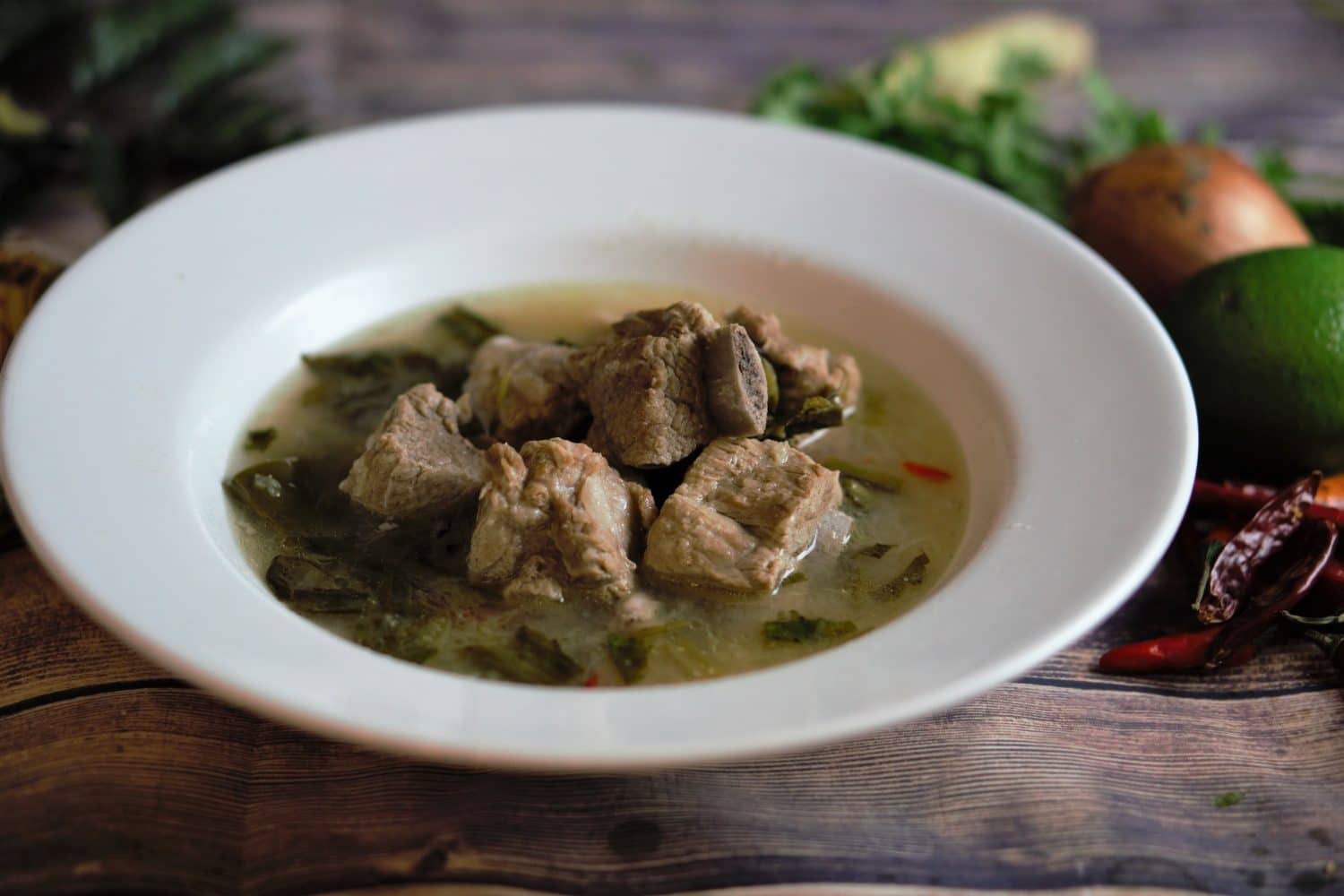
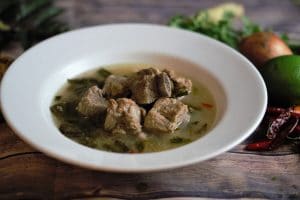
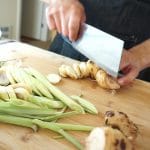
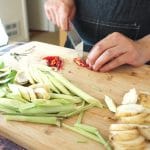




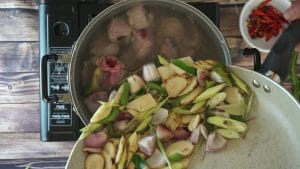
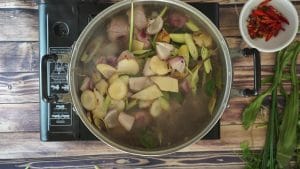
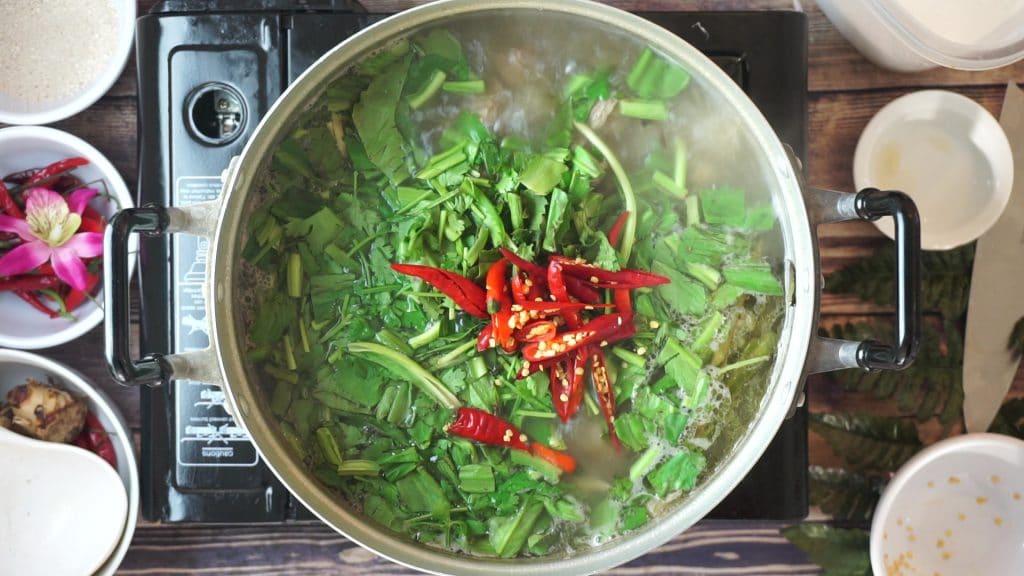
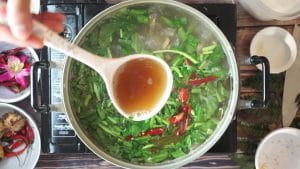
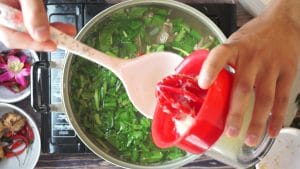
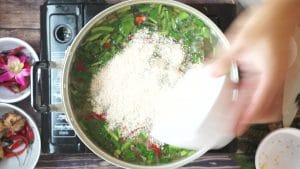
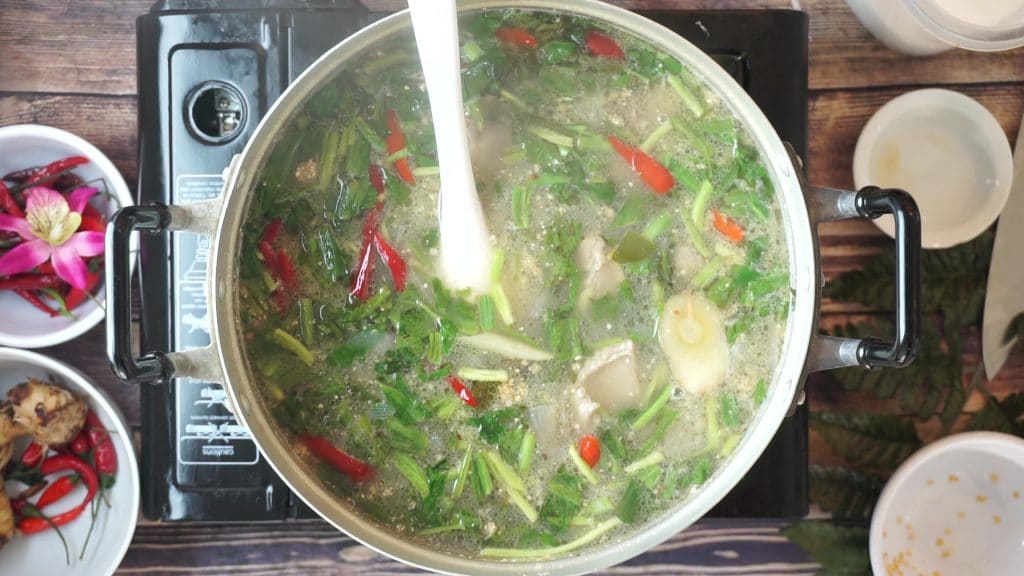
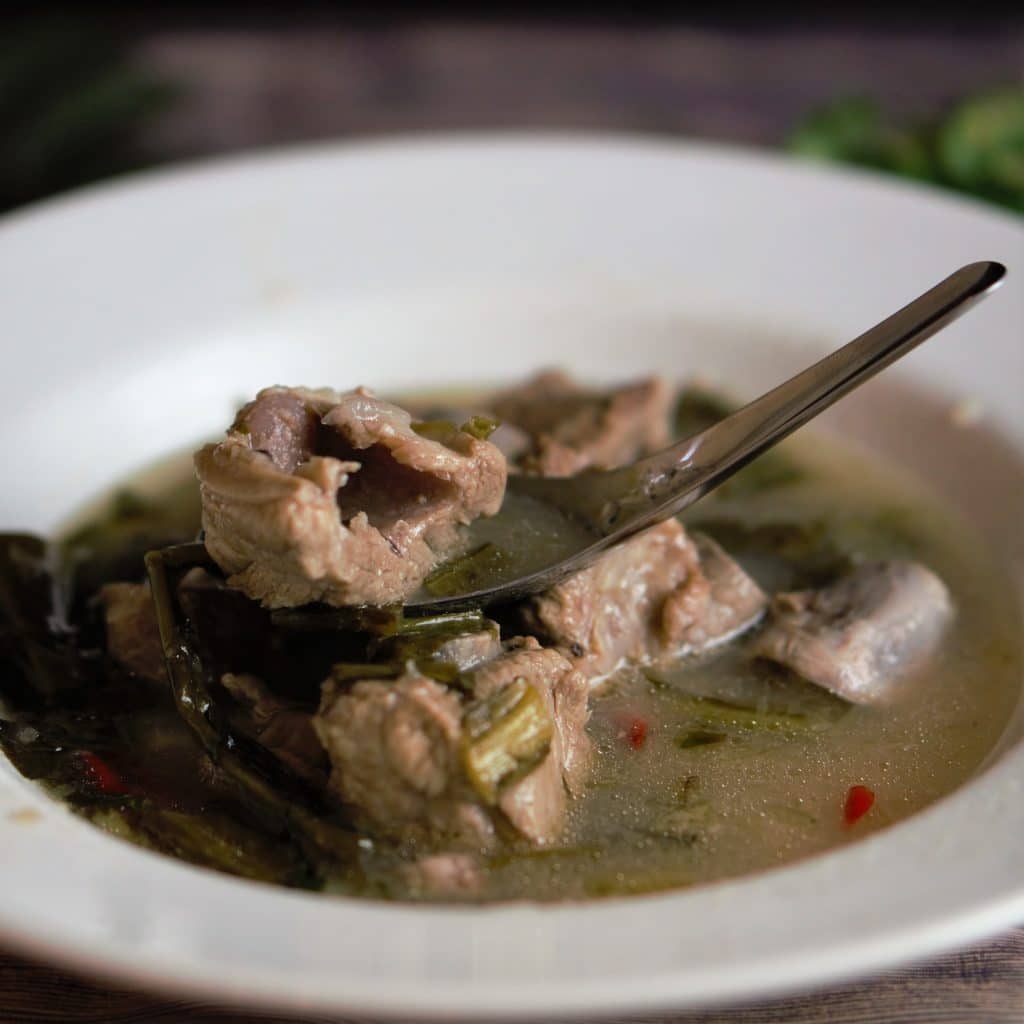
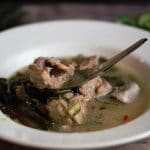

Pingback: How to make Choo Chee Red Curry With Salmon And Scallops in 20 minutes
Pingback: How to Start Cooking Thai Food in 3 steps - Unipan Kitchen